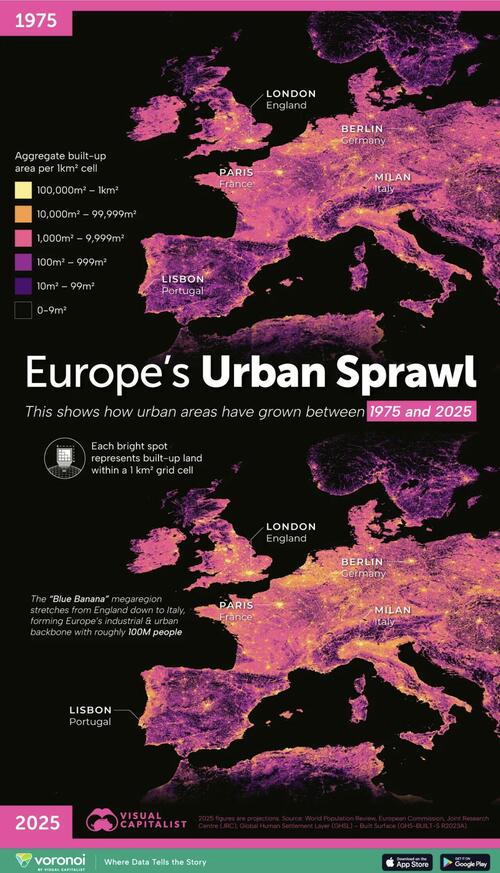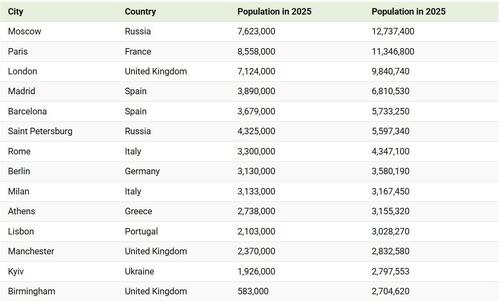How Europe's Cities Have Grown Since 1975
Europe’s cities have changed dramatically in size and shape since 1975. Urban areas across the continent have sprawled outward, merging into large corridors of continuous development. This visualization, via Visual Capitalist's Marcus Lu, highlights the urban growth of major European cities, showing how population and settlement patterns have evolved.
The data for this map comes from World Population Review and Copernicus.
The Largest Urban AreasMoscow leads as Europe’s most populous city, with over 12.7 million people projected by 2025. Paris follows closely with 11.3 million, while London ranks third with nearly 10 million. These cities have long histories of urban development and continue to expand, both in terms of area and density.
Southern Europe’s Urban GrowthMadrid and Barcelona have a combined urban population exceeding 12.5 million. Italian cities like Rome, Milan, and Naples also feature prominently, reflecting decades of steady growth tied to industry and migration.
Fast-Growing Second-Tier CitiesSeveral cities outside the traditional top three have seen striking increases in population since 1975. Madrid’s urban population nearly doubled from 3.9 million to 6.8 million, while Kyiv grew from 1.9 million to nearly 2.8 million. Birmingham saw the most dramatic percentage rise—from just 583,000 to over 2.7 million.
From Lisbon to Saint Petersburg, most of the featured cities experienced substantial population growth over the past five decades.
If you enjoyed today’s post, check out Ranked: European Countries With the Most Immigrants on Voronoi, the new app from Visual Capitalist.
Loading recommendations...

